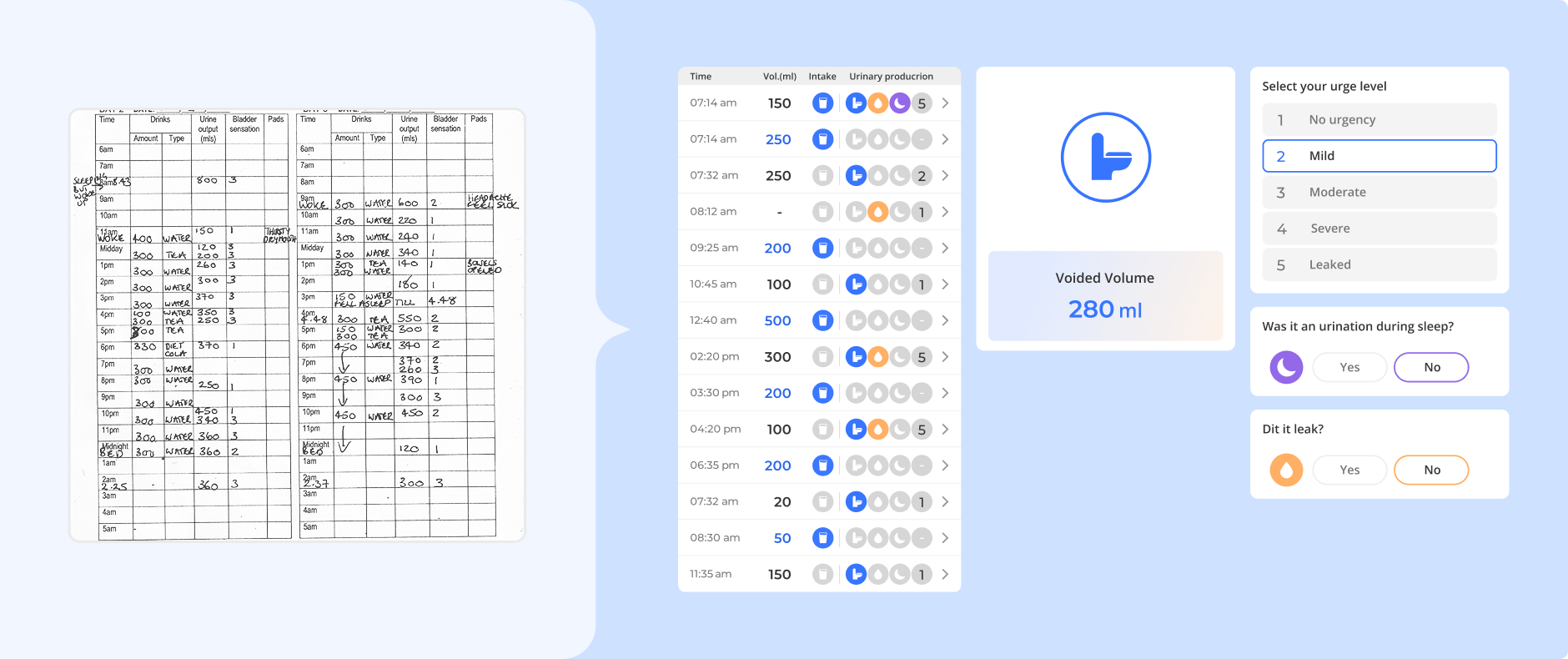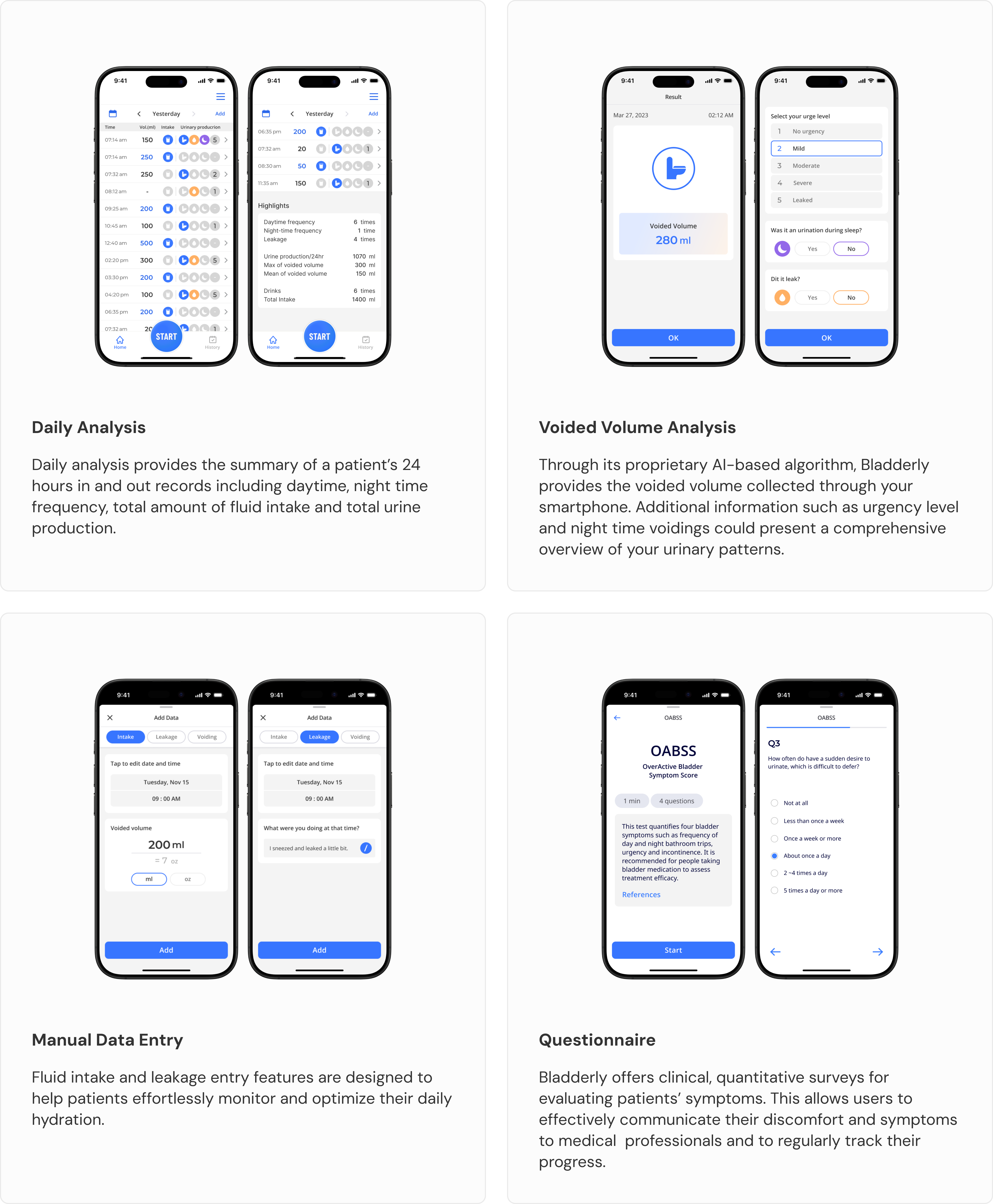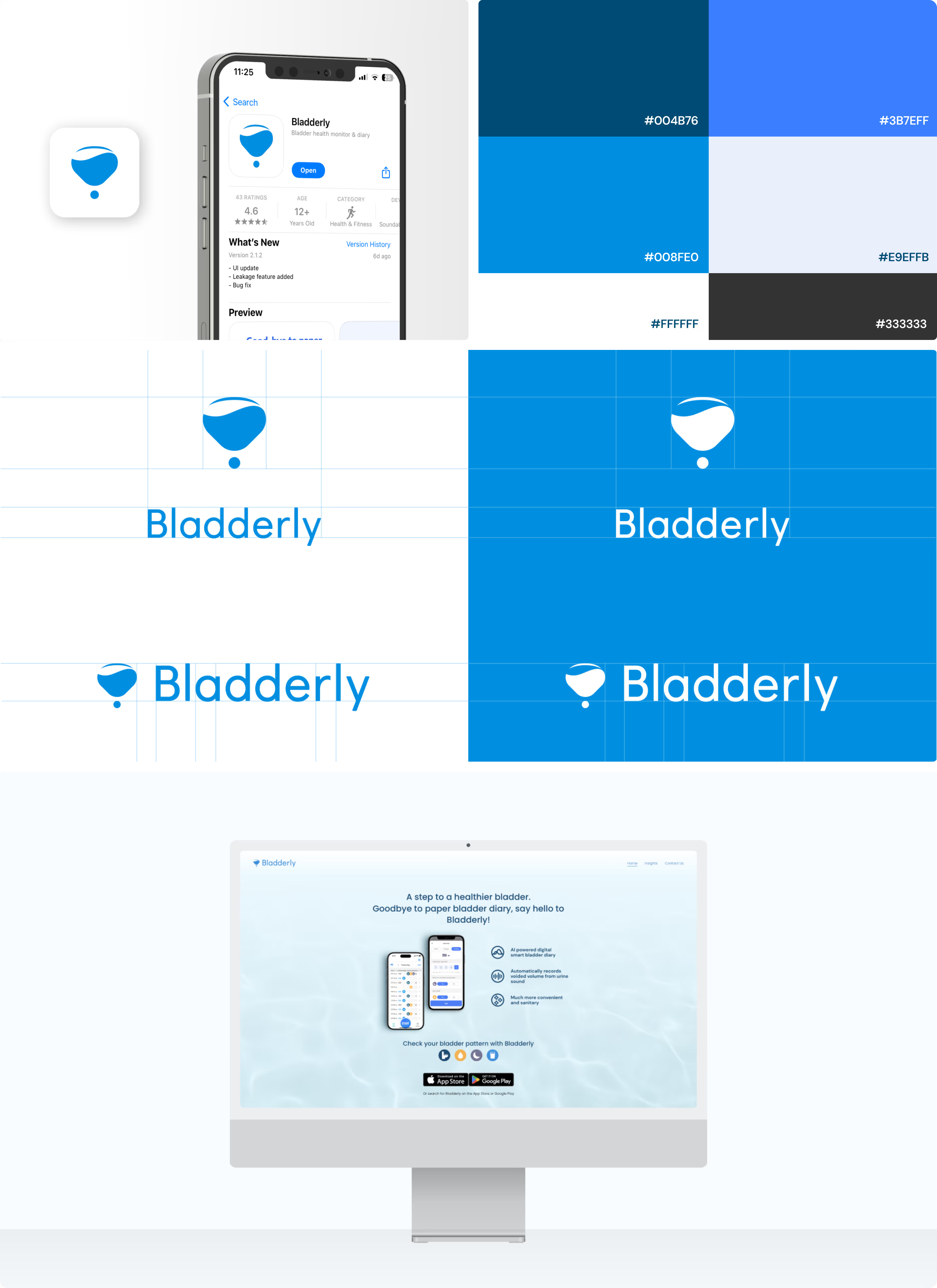As the Lead Product Designer, and Product Manager, I designed a zero-to-one digital bladder diary, defining both UX and UI from the ground up. I also led branding, iterated through usability testing, and collaborated closely with cross-functional teams. In my dual PM role, I planned the roadmap, prioritized features, and added functionality to deliver a holistic view of bladder health monitoring.
Product Manager
Lead Product Designer
UX / UI Design
Visual design
Design Strategy
Product Management team
1 Front-end Engineer
1 Back-end Engineer
Business Team
Figma
Jira
Apple App Store Analytics
Adobe Photoshop
Adobe Illustrator
Adobe After Effects
2021-2023

Bladderly is an AI-powered digital wellness tool that helps users track and understand their bladder health. It automatically records urination frequency, volume, urgency, nighttime trips, leaks, and fluid intake. By consolidating this data and providing actionable insights, Bladderly replaces traditional paper bladder diaries, improving adherence and engagement while helping users manage overactive bladder (OAB) symptoms effectively.

Keeping a bladder diary is recommended for patients with an overactive bladder (OAB). Beyond the physical discomfort, this chronic condition causes difficulty in social activities, leading to self-isolation. This lowers the quality of life and often leads to depression. Given our focus on providing support to patients dealing with OAB, we've adopted a compassionate and gentle approach centering around the keywords stability and empathy.


Based on user research and hands-on experience with paper bladder diaries, we found that traditional diaries were not only cumbersome but also required following multiple rules and instructions to capture accurate bladder patterns. To address these challenges, our design approach focused on three main objectives.
The traditional paper bladder diary, despite its clinical relevance, suffered from several drawbacks including low patient compliance due to its cumbersome nature, and the requirement for constant manual entries, which led to high rates of incompletion and inaccuracy. Our challenge was to maintain the clinical utility of the diary while making it accessible and easy to use.



To balance clinical needs with real-world usability, we made a key decision: rather than striving for perfect precision, we prioritized frequent, lightweight inputs that users could reliably log each day. This approach preserved clinically meaningful patterns—like urination frequency and nocturia—while significantly reducing cognitive and emotional burden. As a result, users felt less overwhelmed, and daily engagement increased naturally.


To enhance tracking and analysis, we consolidated all related data within a single platform, making it easier to log entries. Additionally, we included a feature for noting any related symptoms to gain deeper insights into bladder health for future development.

We simplified the tracking process, focusing on user interface and interaction to ensure ease of use. User feedback and interviews with clinicians were essential in refining the app, focusing on enhancing readability, navigation, and simplifying data entry, particularly for nighttime entries.

Based on the user interviews, I chose ‘peace of mind’ and ‘balance’ as brand promise. Our logotype is derived from the serene 'Didact Gothic' font, and the icon takes inspiration from the form of a bladder and a water drop. I purposefully employed graceful curves to craft a welcoming and soothing image.


Bladderly participated in the 'Autumn Health Exercise Event with Citizens' held at Seoul Plaza. This event featured an experiential health management space at Seoul Plaza, utilizing smart devices to offer a range of physical activities. Being in charge of the booth event, I showcased Bladderly’s technology and products at the smart health experience section, providing citizens with hands-on interaction and insights into our innovative health solutions.




For the promotion of Bladderly products, I created an animation based on the fundamental information regarding bladder disorder, aimed at delivering essential knowledge to the audience.
0 to 1 creating experience based on empathy
Bladderly is the product that grew with me with in my career at Soundable Health. At the beginning of designing the product, the entire design team engaged in a four-day exercise of maintaining a paper diary, mirroring the challenges and experiences of our users. This deep dive emphasized the critical importance of empathy in design, allowing us to forge a brand identity and develop a product that genuinely supports and understands its users. However, the overall design of it became similar to our other product 'proudP' due to the shared technology and concept. If I were to redesign it, I would clarify the user groups of the two products and differentiate more their visuals according to their distinct users.